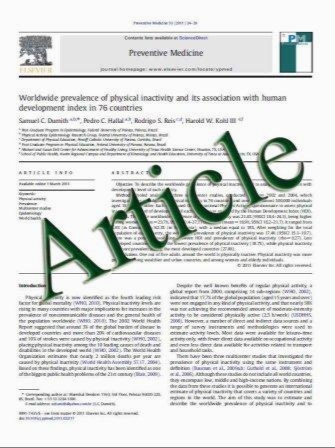BMI change is associated with fracture incidence, but only in non-smokers. The Tromsّ Study
- نوع فایل : کتاب
- زبان : انگلیسی
- مؤلف : T. Wilsgaard & B. K. Jacobsen & L. A. Ahmed & R. M. Joakimsen & J. Stّrmer & L. Jّrgensen
- چاپ و سال / کشور: 2010
Description
Summary Few studies have examined the association between body mass index (BMI) change and fracture in a general population. We observed that BMI loss was associated with increased fracture risk in non-smoking men and women, but not in smokers. BMI gain was associated with decreased fracture risk in women. Introduction Weight loss has been associated with increased fracture risk, but few studies have included men. The aim of this study was to examine the association between BMI change and fracture risk in both genders. Methods A population-based cohort study in Tromsّ, Norway, of adults, aged 20 to 54 years in 1979, who participated in two or three health surveys in 1979–1980, 1986–1987, and 1994–1995. Weight and height were measured at each survey. Information about lifestyle was obtained by questionnaires. Poisson regression was used to estimate incidence rates and Cox proportional hazards regression model to assess the association between fracture risk and BMI change. Fractional polynomials were used to accommodate non-linear associations. Results A total of 5,549 men and 5,428 women participated. There were 1,135 fractures during 10 years of follow-up. Reduction in BMI was associated with increased nonvertebral fracture risk in non-smokers, but not in smokers. The hazard ratio in male and female non-smokers per 10-year BMI decrease of 2 kg/m2 versus a BMI increase of 1 kg/m2 was 1.79 (95% confidence interval (CI), 1.17–2.75) and 1.60 (95% CI, 1.28–1.99), respectively. The association was not significantly modified by initial BMI or age or by exclusion of subjects with cardiovascular diseases, diabetes, or cancer. In female non-smokers, weight gain was inversely associated with fracture risk. Conclusions In a general Norwegian population, reduction in BMI was significantly associated with increased fracture risk in male and female non-smokers, but not in smokers. These findings could not be explained by preexisting disease.
Osteoporos Int (2011) 22:1237–1245 DOI 10.1007/s00198-010-1318-y Received: 22 January 2010 / Accepted: 20 May 2010 / Published online: 12 June 2010


